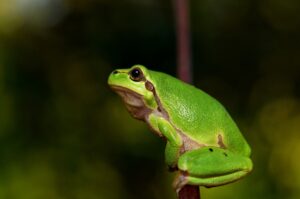
Welcome to the wild world of animals, where every creature has a unique story to tell! Whether you’re an animal lover or just curious about the fascinating creatures that inhabit our planet, this comprehensive guide is here to take you on a journey through the wonders of the animal kingdom. From majestic elephants and roaring lions to tiny insects and elusive sea creatures, we’ll explore their habitats, behaviors, and incredible adaptations that make them thrive in their environments. So buckle up and get ready for an adventure like no other – let’s dive into the awe-inspiring world of animals together!
Introduction to the Animal Kingdom
The animal kingdom is one of the most fascinating things on earth. It’s home to over a million different species, each with its own unique set of characteristics. In this comprehensive guide, we’ll explore the wonders of the animal kingdom, from the smallest insects to the largest mammals. We’ll learn about their habitats, diets, and behaviors, and discover how they’re able to survive in some of the harshest environments on the planet. So let’s begin our journey into the amazing world of animals!
Classification of Animals
There are many different ways to classify animals. One way is by their level of organization, which can be either simple or complex. Simple animals are those that only have one body system, while complex animals have multiple body systems. Another way to classify animals is by their level of complexity, which can be either single-celled or multicellular. Single-celled animals are those that only have one cell, while multicellular animals have multiple cells. Animals can also be classified by their habitat, which can be either terrestrial or aquatic. Terrestrial animals are those that live on land, while aquatic animals are those that live in water.
Endangered Species in the Animal Kingdom
There are many animals in the world that are on the brink of extinction. These animals are known as endangered species. Some of the most well-known endangered species include lions, tigers, elephants, and rhinos. However, there are many other lesser-known animals that are also in danger of disappearing forever.
Endangered species are those that have been categorized by the International Union for Conservation of Nature (IUCN) as likely to become extinct in the near future. The IUCN Red List is a comprehensive inventory of the world’s threatened and endangered wildlife. It includes information on more than 60,000 plants and animals from over 200 countries.
The primary cause of endangerment is habitat loss. This can be due to natural causes such as wildfires or floods, or it can be caused by humans through activities like logging, farming, or urbanization. Other threats to endangered species include pollution, hunting, and climate change.
There are many things that can be done to help protect endangered species. One important thing is to raise awareness about their plight. Another is to support organizations that are working to conserve them. We can all help by making responsible choices in our daily lives that will help preserve these precious creatures for future generations to enjoy.
Adaptations of the Animal Kingdom
Different animals have different adaptations that help them to survive in their environment. For example, some animals have fur or feathers that help to keep them warm, while others have camouflage that helps them to blend in with their surroundings. Some animals can even change their appearance to match the season!
Animals also have different adaptations for finding food and water. Some animals are able to store fat and water in their bodies, while others have long tongues that help them reach nectar from flowers. Some animals can even go without food or water for long periods of time!
Marine Life
There is an incredible variety of marine life on Earth, from the smallest microorganisms to the largest animals on the planet. The ocean depths are home to creatures that are still largely unknown to science, and new species are being discovered all the time.
Marine life includes fish, mammals, reptiles, amphibians, invertebrates, and microorganisms. The term can also be used to refer to the plants that live in the ocean. Marine life is adapted to a wide range of habitats, from the warm waters of tropical coral reefs to the cold waters of the Arctic seas.
Most marine life is dependent on phytoplankton for food. Phytoplankton are microscopic plants that drift in the ocean currents. They provide a vital link in the food chain, as they are eaten by small animals which are in turn eaten by larger animals.
The oceans play a vital role in regulating the Earth’s climate. Marine plants absorb carbon dioxide from the atmosphere and release oxygen back into it. This helps to keep our planet’s temperature stable and livable for all forms of life.
Reptiles and Amphibians
There are more than 7,000 species of reptiles and amphibians in the world, making them some of the most varied and interesting animals on the planet. Here is a closer look at these amazing creatures:
Reptiles are cold-blooded animals that have scaly skin and lay eggs. Some common reptiles include snakes, turtles, and lizards. Amphibians are also cold-blooded, but they have smooth skin and live in water part of their life cycle. Frogs, toads, and salamanders are all amphibians.
Reptiles and amphibians are found on every continent except Antarctica. They can range in size from the tiny Barbados skink (which is less than 4 inches long) to the massive saltwater crocodile (which can be more than 20 feet long).
These animals play an important role in their ecosystems. For example, many reptiles are predators that help keep populations of other animals in check. Amphibians also play an important role in the food chain as both predators and prey.

Whether you’re looking to see a Komodo dragon on a trip to Indonesia or just want to watch frogs mating in your backyard pond, there’s sure to be a reptile or amphibian that will fascinate you.
Birds and Mammals
There are countless reasons to love animals, but for many of us, it’s the birds and mammals that really steal our hearts. These creatures are so similar to us in so many ways, yet they still managed to evolve into such a wide variety of amazing forms. In this section, we’re going to take a closer look at some of the most fascinating birds and mammals on the planet.
Birds are perhaps the most familiar group of animals to us, thanks in large part to the fact that many species live side-by-side with humans in urban areas. But even if you’re not lucky enough to see exotic birds like parrots or toucans on a daily basis, there’s still plenty to appreciate about these creatures. For one thing, birds are incredibly efficient flyers, thanks to their lightweight bones and specially adapted feathers. And many birds are also able singers, using their vocal cords in much the same way as we do.
Mammals, on the other hand, are often seen as the “furry” cousins of birds, although there are actually many more species of mammal than there are of bird. Mammals are warm-blooded vertebrates that have hair or fur (with a few exceptions), and they all give birth to live young. One of the most interesting things about mammals is the fact that they come in such a wide range of sizes; from tiny shrews that weigh less than an ounce
Insects and Arachnids
There are over a million different species of insects and arachnids in the world, making them the most diverse group of animals on the planet. Insects and arachnids can be found in nearly every habitat on Earth, from the coldest polar regions to the hottest deserts.
Insects and arachnids come in a staggering variety of shapes, sizes, and colors. Some, like butterflies, are beautiful to look at. Others, like cockroaches, are not so attractive. But all of them are fascinating creatures worthy of our attention.
Insects and arachnids play important roles in nature. Many are important pollinators of plants, while others help control populations of other animals by preying on them. Some even provide us with food or other valuable products, like honey or silk.
Learning about insects and arachnids can be a fun and rewarding experience for people of all ages. So let’s take a closer look at these amazing animals!
Fun Facts About Animals
Did you know that the animal kingdom is full of fascinating creatures? From the smallest insects to the largest mammals, there are countless animals to explore. In this comprehensive guide, we’ll take a look at some of the most interesting facts about animals from all over the world.
For instance, did you know that the African elephant is the largest land mammal on Earth? Or that the blue whale is the largest creature in the world, weighing in at an incredible 150 tons?
There are also many amazing things about animals that you may not have known. For example, did you know that bats are the only mammals that can fly? And did you know that hummingbirds are capable of flying backwards?
Whether you’re a budding zoologist or just looking to learn more about the incredible animal kingdom, this guide is sure to contain plenty of fascinating facts and information. So let’s get started!
Conclusion
As we’ve explored, the animal kingdom is vast and filled with wonders. From the complex behavior of dolphins to the unique characteristics of sloths, this world has many incredible creatures that are sure to fascinate anyone who takes time to learn about them. Whether you’re a nature lover or simply someone looking for a fun way to get in touch with nature, exploring the wonders of the animal kingdom is an enriching experience that will leave you awestruck.







